Heavy fighting on the northern side of Bakhmut. In the Khromove road area, despite constant attacks and shelling, Russians have not made any significant progress for weeks.
Our #OSINT team acquired some satellite images which will explain why the attack has mostly halted. 1/🧵
Our #OSINT team acquired some satellite images which will explain why the attack has mostly halted. 1/🧵
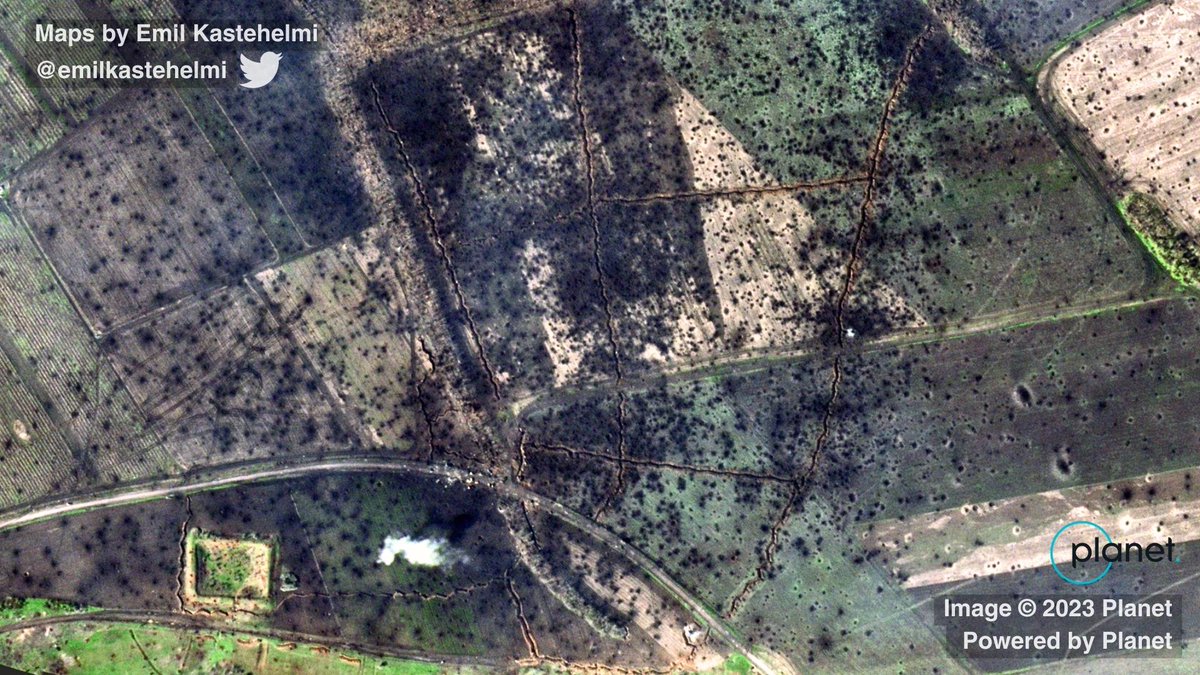
The main reason for the static situation are the extensive fortifications dug by the Ukrainians. They were well prepared to defend against the Russians, and they have held their positions even under the most difficult conditions, even longer than I initially expected. 2/ 
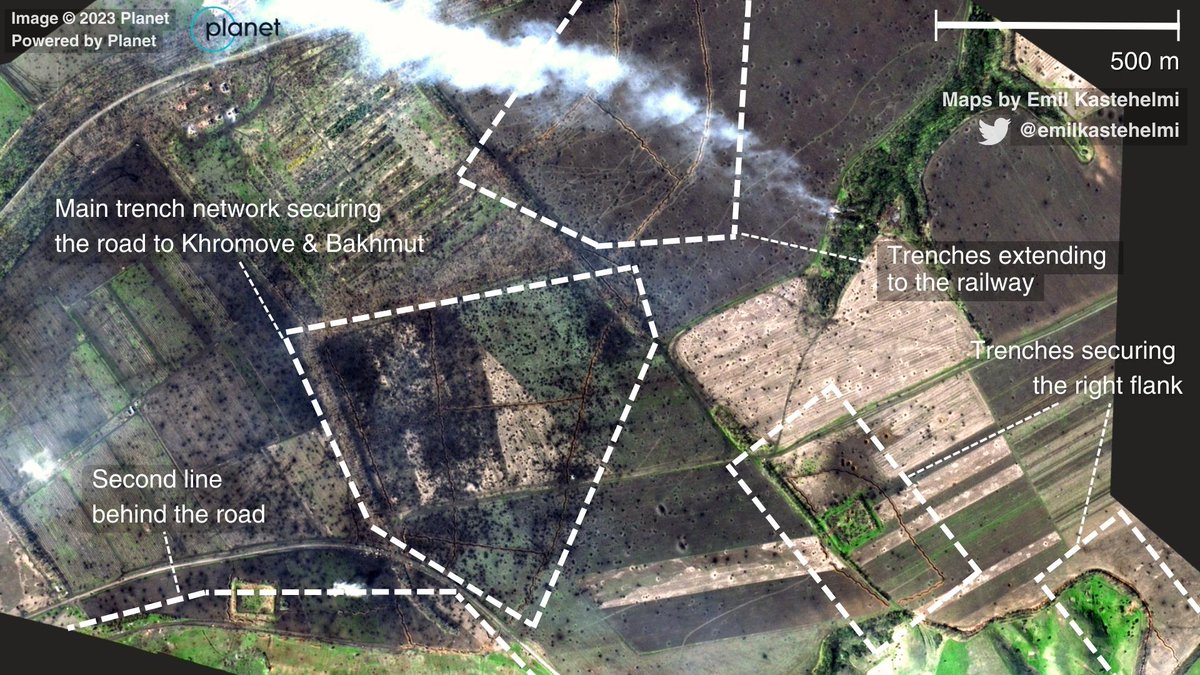
The general situation in the area looks like this. There can be some slight errors, as some areas are constantly changing hands. Russians are pushing from all sides, and Ukraine is conducting small-scale counterattacks inside the city and the surrounding areas. 3/ 
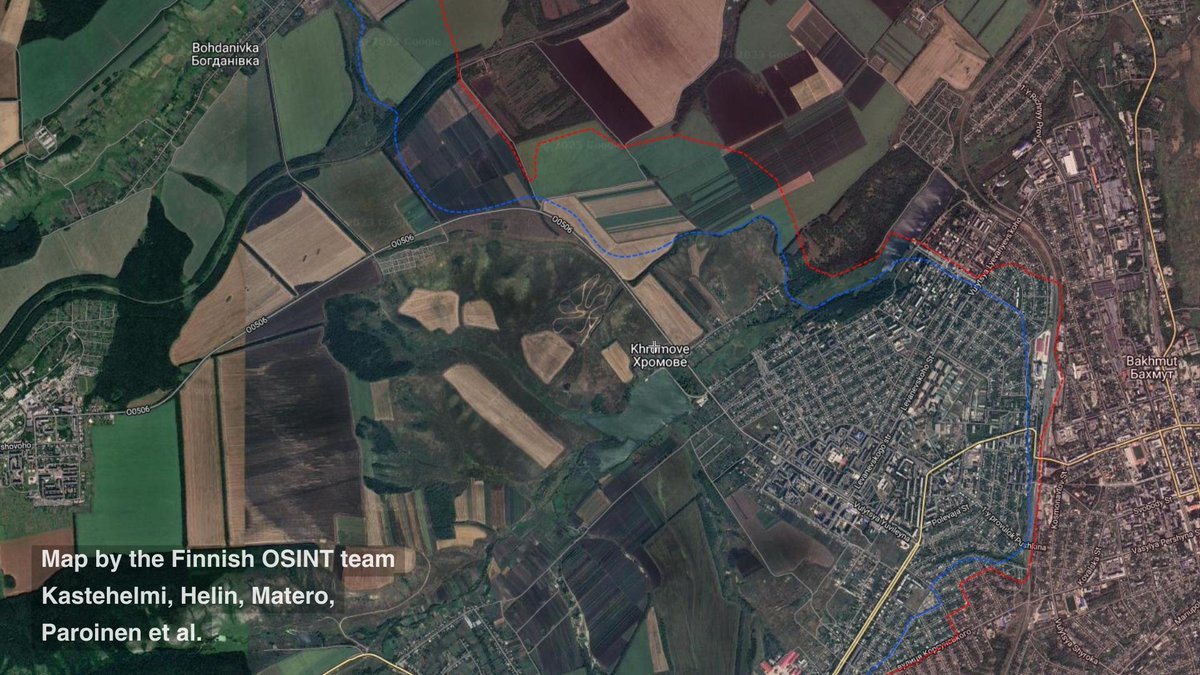
The main fighting is taking place in the trenches near the Khromove road. The Russians have concentrated their artillery fire here, and the ground is black from the shelling. Even though the fortifications are damaged, they still seem to be somewhat usable. 4/ 
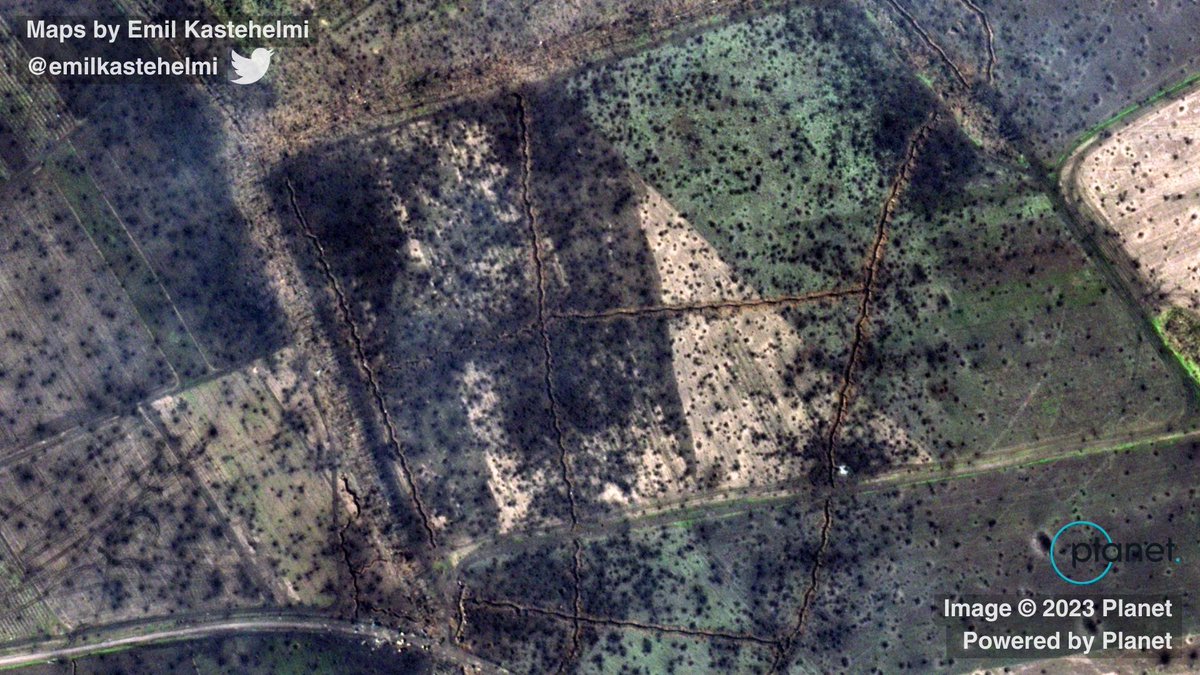
This famous clip shows what fighting on the ground looks like. I'm usually trying to avoid the phrase "this looks like WW1", but the video coupled with the satellite imagery does give me a feeling that I've seen this before, so to say. 5/
https://twitter.com/DefMon3/status/1648699457100210182
The Khromove road is not in active use anymore, and has not been for a few weeks, as it has become too dangerous. Satellite images show multiple destroyed vehicles on the side of the road.
Main supply routes go from Ivanivske to Bakhmut. 6/
Main supply routes go from Ivanivske to Bakhmut. 6/
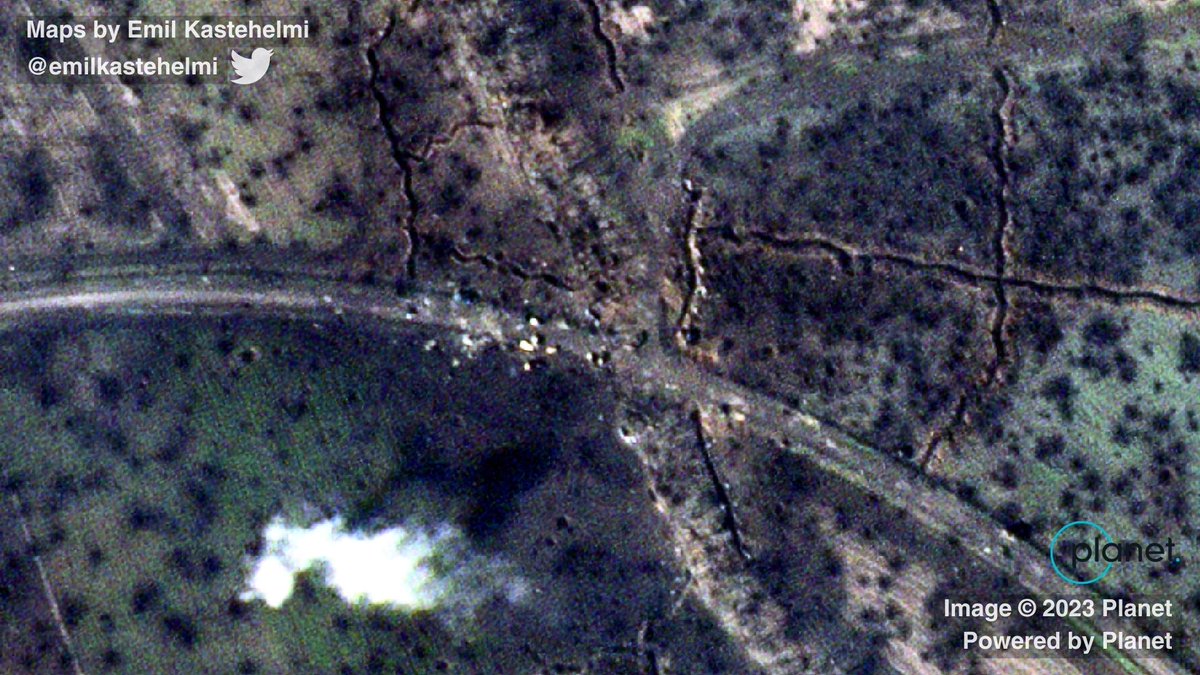
Holding this area is extremely important for Ukraine. If it falls, Russians are at visual range from the remaining supply roads. If they manage continue towards the heights behind Ivanivske, Ukraine is most likely forced to abandon Bakhmut. 7/
This battle shows again, that trenches do matter. Now Ukraine is using them to repel Russian attacks, but it will be difficult when Ukraine needs to punch through the Russian fortifications in multiple directions during their spring offensive. HIMARS isn't the answer to this. 8/
An interesting little detail: A rather large fire in the Russian-controlled zone, next to a forest strip. It is unclear what is burning there, but there is a lot of smoke coming out of it. 9/ 
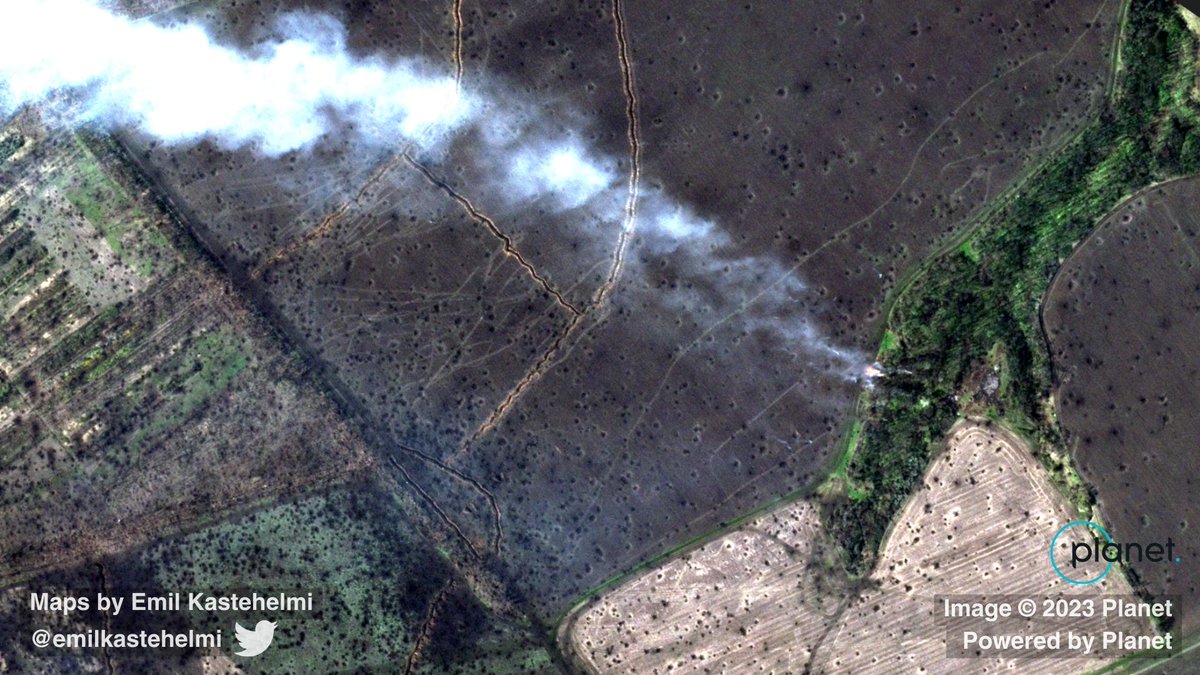
Our team (me, @J_JHelin, @EerikMatero, @Inkvisiit and others) continues to monitor the situation. We're constantly updating our interactive map.
Also, more satellite stuff to come. Thanks to @wihurinrahasto for making this possible. 10/10
scribblemaps.com/maps/view/The-…
Also, more satellite stuff to come. Thanks to @wihurinrahasto for making this possible. 10/10
scribblemaps.com/maps/view/The-…
• • •
Missing some Tweet in this thread? You can try to
force a refresh










